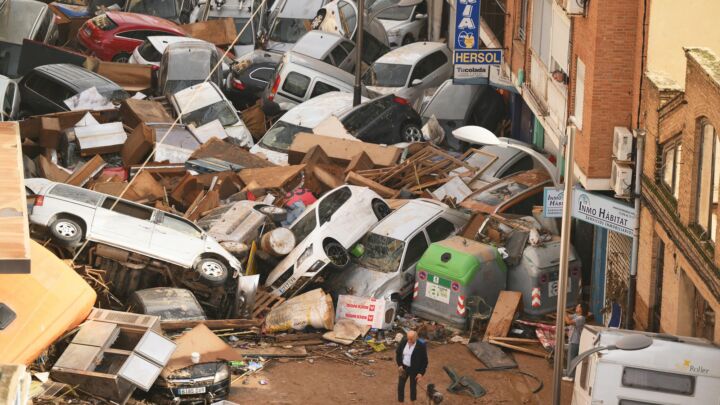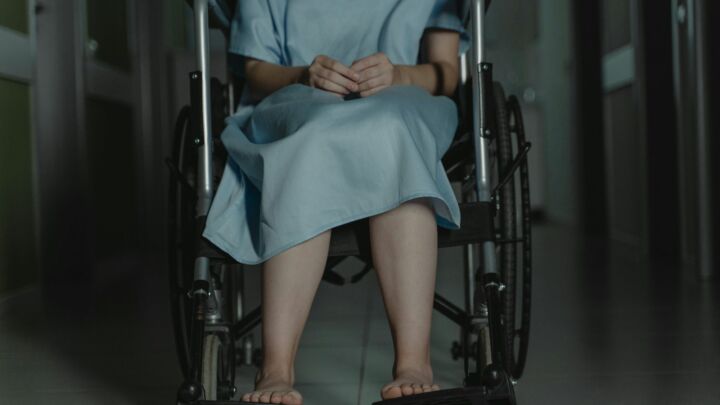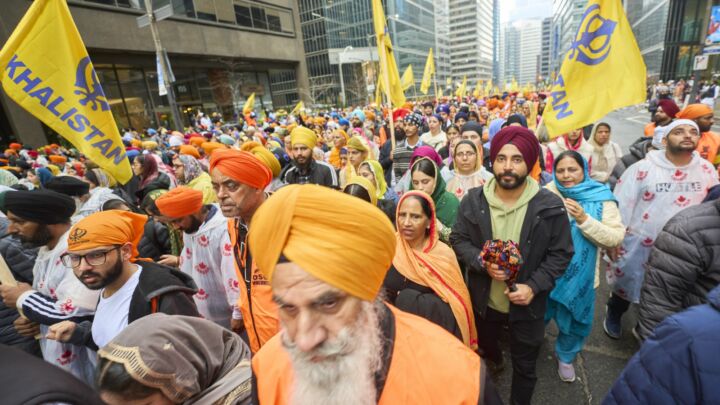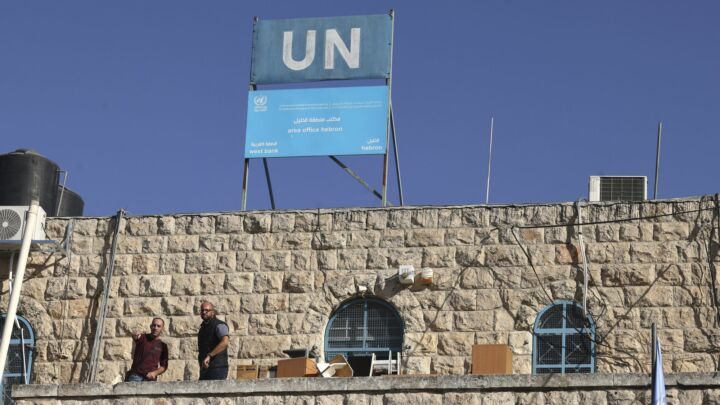They need more than sympathy for Neda
The way that the image of a dying student has become the icon of the Iranian protests suggests both strengths and weaknesses in the opposition.

Want to read spiked ad-free? Become a spiked supporter.
The bloodied image of philosophy student Neda Salehi Agha Soltan has become the international icon of the protest movement in Iran. The mobile phone footage of her dying in a Tehran street, shot apparently by a supporter of the Iranian regime, has flashed around the world and galvanised opposition to the government accused of fixing the election in favour of President Ahmadinejad. Social networking sites such as Facebook and Twitter have been inundated with emotional tributes to her, while protesters outside Iranian embassies in Western capitals display pictures of the ‘Angel of Iran’ and declare: ‘I AM NEDA.’
The way that Neda’s haunting image has become the symbol of the protests seems to capture both the strengths and the weaknesses of the opposition movement.
The response to her death shows the strength of feeling that now exists within a sizeable section of the Iranian population, the anger towards the Islamic regime felt especially by younger people in Tehran, the yearning for change. For many it appears that the killing of Neda has become the moment the conflict crossed the line into a life-and-death struggle. The furious worldwide reaction to the footage of her death also shows the extent of international support for the protests, not only among self-interested Western governments and Iranian émigré communities, but also among members of the wider public.
Yet perhaps the way that the dying Neda has become the symbol of the struggle also points to some important limitations of the protest movement so far. Her tragic death has rightly sparked a lot of passion. But it will take more than anger and emotion to overthrow the Iranian regime. It will require a clear-eyed political strategy to match the passion. That has seemed noticeable by its absence among the students and other angry protesters in Tehran over the past two weeks. They declare that ‘Neda is our hero and our leader’. But there are limits to how far you can get if you are following the image of a dying young woman. Neda was not a leader in life – she was reportedly shot when she got out of a car stuck in traffic amid the chaos of clashes between the police and protesters. The way that she has been turned into a leader in death suggests that her image, her shadow, is filling the space where real political leadership of the protests ought to be.
While emotions have been rising around Neda, the only people claiming leadership of the opposition remain conservative clerics and politicians, most prominently the presidential challenger Mir-Hossein Mousavi. As noted on spiked last week, these are all insiders, disaffected supporters and servants of the regime. Indeed in his big speech about the election controversy last week, Iran’s Supreme Leader, Ayatollah Khamenei, was at pains to stress that the dispute was between members of the Islamic establishment. Carried along by the pressure of the protest movement, Mousavi and the rest have already gone further than they would previously have dared in terms of calling for demonstrations and demanding an electoral re-run. But their aims remain modest and conservative, looking for a change at the top of the state and some minor reforms rather than root-and-branch change. The anger and energy of the protesters will be wasted if these figures are allowed to retain control and reduce the opposition movement to a stage army to be exploited in the intra-establishment disputes we are told are now raging behind closed doors.
The extent to which Neda’s image has been broadcast and embraced around the world also illustrates the international orientation of the protest movement. They have used Twitter, Facebook and other social networking websites to get their message about the ‘stolen’ presidential election around the world, and displayed slogans in English to appeal to the international media.
These can all be important tools for getting news out of Iran and encouraging international solidarity. But talk of a ‘Twitter revolution’ sounds like the political equivalent of dotcom hype. The Western media and liberal classes around the world are not going to bring real change to Iran, no matter how hard they twitter. Where the opposition needs more support for action is among Iranians themselves. While the focus has been on bringing Neda to the world’s attention, it is unclear what attempts have been made to try to win wider support for the Tehran protests and bridge the infamous urban-rural divide inside Iran. Whatever the truth about the dubious election results, there is certainly a lot of hardcore support for Ahmadinejad in the country, but the situation cannot be as black and white as it is often presented; more acute observers have reported, for example, that many support the president because of his populist stand against corruption and privilege within the clerical elite. No doubt it will not be easy to win wider support in Iran, but it will mean a lot more than gaining sympathy from twitterers in the West. It is all well and good for those affected by the image of Neda to announce that ‘We are all Iranians now’, but when push comes to shove ‘we’ proxy-Iranians cannot do the business in Tehran.
The Neda phenomenon also points to another possible shortcoming of a protest movement with an orientation towards an international audience. Her picture symbolises the image of the protesters as victims of an undemocratic government and state brutality. The chattering or twittering classes in the Western world are keen to empathise with the innocent victims of a repressive foreign regime. (Some of the artworked images of the dying Neda doing the rounds on the web might even be thought of as protest porn.) Yet such sympathy for victimised Iranians is not enough. Victims never made a revolution or won a civil war.
Many commentators have drawn comparisons between the footage of Neda’s death and the famous film of the Chinese student standing in front of advancing tanks in Tiananmen Square 20 years ago, both symbolising the bravery of the protesters. That comparison could also be seen as instructive for another reason. Despite the courage of the young man confronting the tanks, the Chinese protests were crushed by the violence of the state. By the time the peaceful protesters realised the need to fight fire with fire in such circumstances, it was too late.
One British commentator has drawn another historical comparison, observing that the rallying cry ‘I am Neda’ echoes ‘the solidarity of those Roman slaves who exclaimed, one after another, “I am Spartacus”’. Spartacus, however, was not an innocent victim of violence. He was the leader of an armed slave revolt that shook the mighty Roman empire, an early revolutionary whom Karl Marx named as his historical hero, a symbol of the spirit of forceful resistance to oppression. The Iranian opposition will surely need a similar fighting spirit if it is to advance the cause of genuine change. We have already seen that there is no lack of courage in their ranks. It seems unlikely that Neda and the 17 others reported killed in the past fortnight would be the last casualties of a successful struggle – or that all the casualties would be on one side.
Yet if the anger exhibited around Neda’s death could be focused on a forceful political strategy, the prospects for progress appear far from bleak. The authority of the Islamic regime is on the line and the establishment is at odds with itself as never before in face of the protests. Despite the familiar hardline rhetoric from Ayatollah Khamenei and his supporters, the fact that they have felt it necessary to make even cosmetic concessions is a sign of potentially changing times. And behind the louder and louder threats from the regime to the opposition, there has as yet been no full-scale crackdown. Instead, seemingly uncertain about the consequences, the authorities’ repression has so far appeared intermittent and informal; Neda was apparently shot dead by a member of the religious militia rather than the state police.
The first wave of repression might have been enough to halt the early Tehran protests. Yet it is early days in this struggle. Neither side shows signs so far either of giving in or of acting decisively to end it. It remains to be seen how things will be resolved. But one thing that appears certain is that, one way or another, the regime will remain in control unless the protesters can develop the emotional outburst ‘I am Neda’ into the political demand ‘We need power’.
Mick Hume is spiked’s editor-at-large.
Previously on spiked
Mick Hume looked at the chances of another revolution in Iran. Brendan O’Neill wondered why Britain’s foreign secretary was so opposed to Iran having nuclear technology. David Chandler contrasted the UK government’s bombastic attacks on Iran with its relative silence once British sailors were seized by the Iranians. Or read more at spiked issue Iran.
Celebrate 25 years of spiked!
A media ecosystem dominated by a handful of billionaire owners, bad actors spreading disinformation online and the rich and powerful trying to stop us publishing stories. But we have you on our side. help to fund our journalism and those who choose All-access digital enjoy exclusive extras:
- Unlimited articles in our app and ad-free reading on all devices
- Exclusive newsletter and far fewer asks for support
- Full access to the Guardian Feast app
If you can, please support us on a monthly basis and make a big impact in support of open, independent journalism. Thank you.







Comments
Want to join the conversation?
Only spiked supporters and patrons, who donate regularly to us, can comment on our articles.